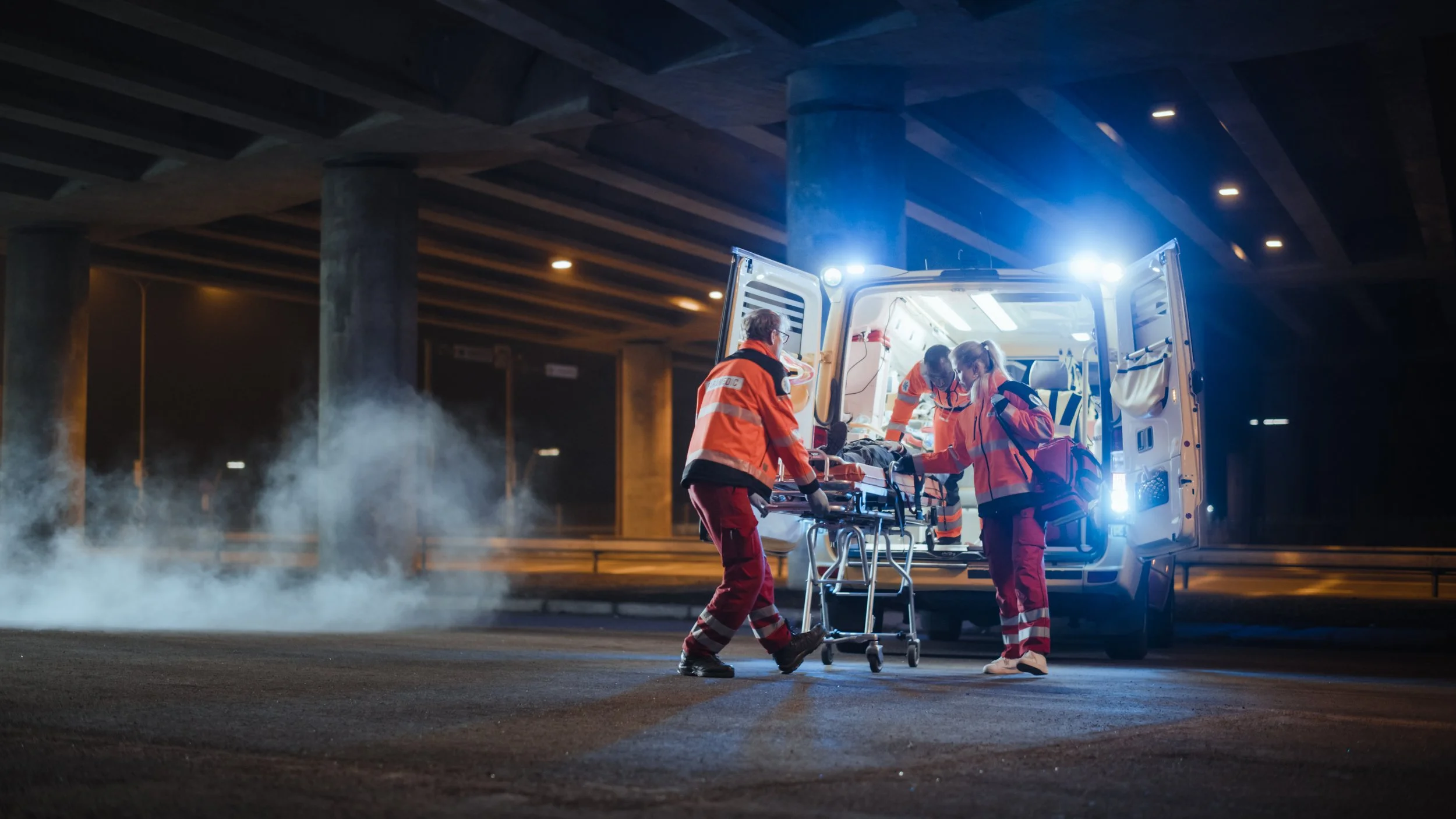
Perspectives
Dennis Thomas on Drug Prevalence Among Seriously Injured Road Users
By Dennis Thomas & Jason Jefferies
Dennis Thomas, PhD
Jason Jefferies, MA
-
Blood samples collected within hours of a crash allowed the study to clearly confirm which drugs were present in seriously injured road users.
-
Dunlap successfully coordinated more than 100 people across trauma centers, universities, and labs to deliver a complex, large-scale study.
-
The findings are now informing NHTSA outreach and enabling NIH and CDC researchers to pursue new trauma and surveillance studies.
Dunlap Research was the prime contractor for a study of Drug Prevalence Among Seriously Injured Road Users for the National Highway Traffic Safety Administration (NHTSA).
“The essential part of this study is understanding how many people who are seriously injured in a motor vehicle crash (MVC) had a particular drug in their system at the time of that crash. What was key to this study is that we were able to test people very shortly after their crash,” Principal Investigator (PI) Dennis Thomas said. “When we got a blood specimen from someone, we were almost certain that any drug that was detected in their system was in their system at the time of the MVC. To be sure, we did account for drugs that were administered by EMS, but if there was THC in the blood, for example, we know the person had likely not ingested that drug between the time of the crash and the blood test.
“That was the key component that set this study apart,” Thomas continued. “The study was able to definitively say Yes, these drugs were present in these people, and these people, who were transported to a trauma center, were seriously injured. It was a study that was the first of its kind in the United States, to have that kind of data so close to an MVC.”
How is this problem related to National Roadside Studies?
“The National Roadside Studies are focused on people who are on the road, actively driving, who haven’t had a problem yet,” Thomas said. “The Drug Prevalence Among Serious Road Users study is looking at more serious cases where there has indeed been a crash, where there has been a serious injury necessitating that a person be transported.”
What is the importance of the type of data collected in this study, and how is it used?
“Others have been studying drug prevalence for quite a while,” Thomas says. “Alcohol was the big one forever, largely because the testing techniques for other drugs are really just now developed to a point where you can test for them on a large scale at a reasonable cost. With all the legislative changes around cannabis, it’s important to test whether cannabis prevalence among drivers changes after legislation.
“Same thing with new drugs. You have emerging drugs like fentanyl, and this type of study gives a quick snapshot of how often these drugs are appearing in people who are involved in MVCs. NHTSA is then able to take this information and use it for their public outreach and public health policies.”
What was Dunlap’s role in this project?
“We were the prime contractor on the study, and we were responsible for all the coordination,” Thomas said. “I think this study demonstrates that, even though we are a small company, we can lead a project where at any moment, more than 100 people are working actively across major Level 1 trauma centers and coordinating with universities and toxicology labs. We are small, but we can lead these large studies.
“Overall,” Thomas said, “this study is a great example of how a project can be useful for multiple agencies. For example, it wasn’t just a drug and alcohol study in the end, it was also a COVID-era study. The National Institutes of Health (NIH) was able to use the specimens we collected for additional analyses, where they discovered new markers related to trauma victims and the body’s response. The Centers for Disease Control and Prevention (CDC) is still analyzing specimens we collected to study older adult falls. The study keeps inspiring new research, including the possibility for a sentinel surveillance system across the country.”
About the Experts
Dennis Thomas, PhD
Dr. Thomas’ professional experience at Dunlap encompasses a wide range of topics, but has been primarily focused on transportation safety. Within transportation safety, Dr. Thomas has worked on the development and evaluation of a number of safety programs for passenger vehicle drivers, commercial vehicle drivers, and pedestrians/bicyclists. In addition, he has applied his Human Factors expertise to aviation and litigation support.
Jason Jefferies, MA
Jason Jefferies is an experienced writer, editor, and project manager with a background spanning journalism, media, and higher education. He has written for publications including VegNews, The Colorado Sun, Aspen Daily News, and WRAL.com, designed websites for multiple organizations, and hosts two podcasts with over 50,000 listeners. At Dunlap, Jason prepares, reviews, and edits scientific and technical reports, proposals, and literature reviews, ensuring accuracy, clarity, and adherence to style standards. He also collaborates with Principal Investigators on project strategies and timelines, manages internal and external communications, and is overseeing the refresh of Dunlap’s website featuring new stories, interviews, and recordings.
Have a Question?
We’d love to hear from you. Reach out to learn more about this topic or discuss your next project with our team.
Contact Us




